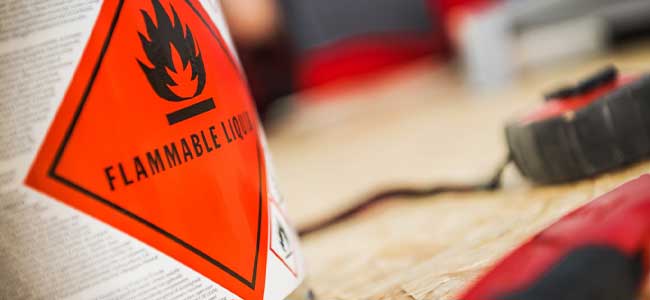
Do Combustible Liquids Matter Anymore?
Learn about one professional's experience with the terms flammable and combustible liquids.
- By Tim Carrico
- Jun 27, 2023
It has been over 10 years since OSHA adopted the Globally Harmonized System of Classification and Labelling of Chemicals (GHS) into its Hazard Communication Standard (HazCom), and yet, there is some misunderstanding about the standard that still persists. Despite years of advance notice and the efforts of several manufacturers, importers, distributors and the companies who use the chemicals to update labels and SDSs, HazCom continues to not only be on OSHA’s list of Top 10 Most Frequently Cited Standards but to be towards the top of that list, even a decade later. To be fair, the HazCom standard has proven difficult for many businesses to comply with even before the adoption of GHS. While most of the changes to how chemical hazards are communicated in the workplace are arguably better, some of them have caused confusion and misunderstanding.
One significant area of change is in how flammable and combustible liquids are defined. Not only were the criteria for the different categories changed but the terminology was changed as well. Shortly after the changes went into effect, I had several discussions with colleagues claiming that the term combustible liquids was no longer in use. There were even articles in safety journals that stated the same. Even today, conducting a web search will find safety websites claiming that combustible liquids are no more. But is this claim accurate?
Personally, I was notably surprised by this change. Being actively involved in safety at my workplace, I decided to improve my knowledge and skillset by going back to school and getting a degree in occupational safety and health sciences. In my very first safety course, I learned the difference between flammable and combustible liquids, and this was an ‘Aha!’ moment for me because despite being involved in safety, I never really understood the difference between the two. In my mind, I had somehow decided that a combustible liquid must have something to do with the compression force that resulted when the liquid was ignited. (I was thinking along the lines of a combustion engine, though this line of reasoning doesn't really make sense for several reasons, not the least of which is the fact that gasoline is used in combustion engines but is considered a flammable, not combustible, liquid.)
So to learn that it was something as simple as a flashpoint—a flashpoint below 100 degrees Fahrenheit was flammable and everything at or above it was combustible (see figure 1)—was eye-opening for me; but it was also empowering, as if I had gained some secret special knowledge. It wasn’t that I wanted to keep the secret to myself. I readily shared it with others. I waited for that moment when somebody would ask me, “What is the difference between flammable and combustible?” (Of course, nobody actually ever did.) But I learned something that gave me a better understanding of safety in the workplace. It was moments like these that made me feel that all the effort to get my degree as a working adult was worth it. So when I was told that combustible liquids were no more, it was as if something had been stolen, a small triumph of knowledge that had been taken away.
This article originally appeared in the August 1, 2023 issue of Occupational Health & Safety.